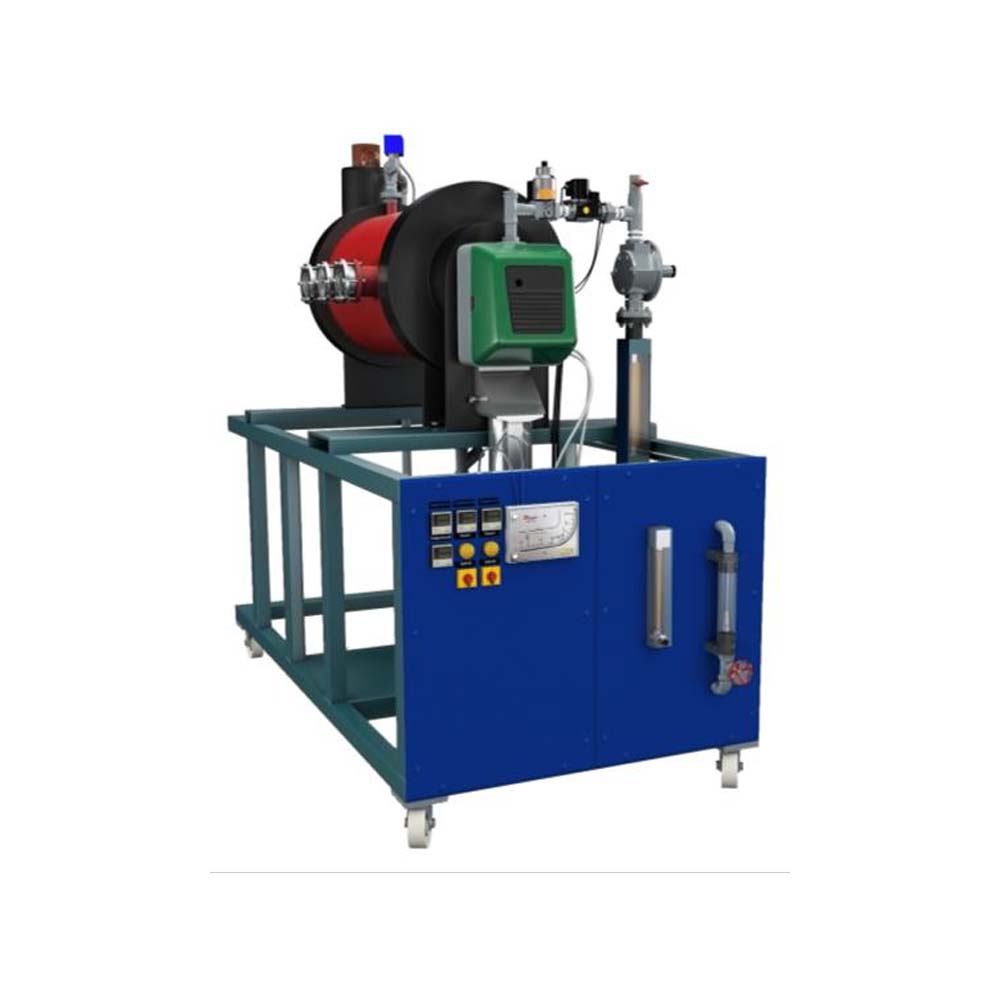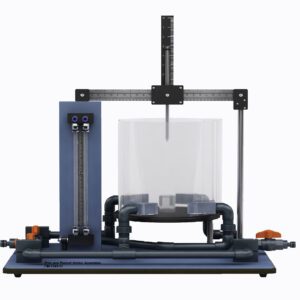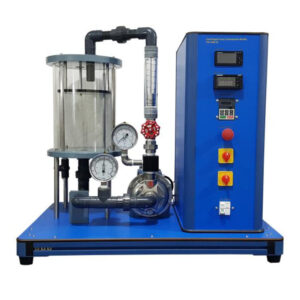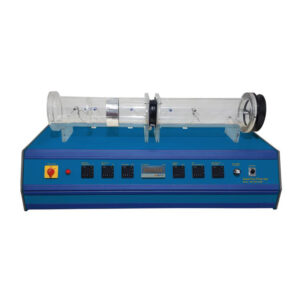The Combustion Laboratory Apparatus is floor mounted designed for students to study many aspects of combustion using a small scale unit which will be easily understood and controlled, based on an industrial dual fuel burner. The unit comes with the burner, combustion chamber, control panel and instruments, all at a convenient working height. Students shall vary the fuel and air flow rate over a wide range and their effect on flame characteristics, and combustion efficiency may be reduced. With a flue gas analyzer, the composition of the fuel gas may then be determined and related to the air to fuel ratio. Floor standing combustion unit capable of burning light boiler fuel oil, L.P.G or main gas over a wide range of fuel flow rates and air-to-fuel ratios. Burner firing into a water cooled combustion chamber with provision for flame observation and gas sampling.
- Experiments
- Familiarization of the adjustment and operation of a commercial oil or gas burner.
- Assessment of a burner Using either clean light boiler fuels, or natural gas or LPG
- including:
*Firing rate
*Turndown range
*Flame stability, Flame shape, and Flame radiation
*Smoke emission- - The effect of air/fuel ratio on: Combustion efficiency as measured by flue gas constituents, temperature, and Heat transfer
- Energy balance
- Comparison of Flue Gas Analysis with theoretical predictions
- Comparison of Oil and Gas Burners
- Comparative performance of different fuels or fuel additives
Specifications
- Anodized aluminum frame and panels made of painted steel.
- The unit includes wheels to facilitate its mobility.
- Main metallic elements made of stainless steel.
- Stainless steel combustion chamber with five pieces of 100 mm diameter for the observation points.
- Cooling jacket with thermometer, manometer and pressure switch to avoid overpressure in the jacket.
- Dual burner to work both with natural gas (or other LPG) and fuel oil




